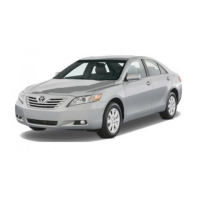
Do you have a question about the Toyota 2007 Camry Hybrid and is the answer not in the manual?
| Brand | Toyota |
|---|---|
| Model | 2007 Camry Hybrid |
| Category | Automobile |
| Language | English |
Provides an overview of the hybrid vehicle system and its components.
Details how the hybrid system performs controls and displays energy usage.
Provides a procedure for starting the hybrid vehicle using the push start system.
Highlights precautions related to high voltage components in the hybrid system.
Identifies various components of the instrument panel.
Provides an overview of the instrument cluster and its gauges.
Covers the vehicle's keys, doors, and related systems.
Details the electronic and mechanical keys, including their functions and precautions.
Describes how to lock and unlock the vehicle's doors using various methods.
Explains how to open the trunk lid using the electronic key or lock release lever.
Explains how to open and close the fuel filler door and cap.
Covers systems designed to protect occupants during a crash.
Details seat adjustment, front seat precautions, and passenger seat safety.
Explains the proper use and precautions for seat belts, including child restraints.
Describes the function and precautions for SRS airbags and related systems.
Covers adjustments and features of the steering wheel and mirrors.
Explains how to adjust the steering wheel's position and reach.
Describes the automatic anti−glare function of the inside rear view mirror.
Covers the operation of exterior lights, wipers, and defogger systems.
Details manual and automatic operation of headlights and turn signals.
Details the operation of the windshield wipers and washer fluid system.
Explains how to use the defogger for the rear window and outside mirrors.
Introduces gauges, meters, and indicators for vehicle status.
Explains the fuel economy meter and its indications for driving efficiency.
Describes the information displayed on the multi−information display.
Lists and explains various messages displayed for system status and warnings.
Covers the vehicle's POWER switch, transmission, and parking brake operation.
Explains how to operate the POWER switch for accessory, ON, and OFF modes.
Details the selector lever positions and shift lock system for transmission operation.
Explains the VDIM system for vehicle motion control and stabilization.
Describes the tire pressure warning system and its indicators.
Details how to turn the cruise control on/off, set speed, and cancel.
Covers the vehicle's audio system and hands−free phone features.
Explains basic operation of the audio system, including power and basic functions.
Identifies key components of the audio unit, such as display and controls.
Explains the compatibility and features of the MP3/WMA player.
Lists functions and references for setting up and using the hands−free phone system.
Details the process of pairing, selecting, and managing phones in the hands−free system.
Explains how to make phone calls using speed dial, dial by name, or dial by number.
Introduces the air conditioning system and its components.
Details the controls for the automatic air conditioning system.
Explains how to adjust air flow settings for different conditions.
Gives recommended control settings for heating in automatic and manual modes.
Provides recommended control settings for air conditioning in automatic and manual modes.
Explains control settings for inside and outside windshield defogging.
Details the climate controls located on the steering wheel.
Covers checking, cleaning, and replacing the air conditioning filter.
Lists various other equipment and features of the vehicle.
Explains how to display and adjust trip information via the navigation screen.
Details the fuel consumption information displayed on the screen.
Describes the compass display and conditions affecting its accuracy.
Provides instructions for calibrating the compass to correct direction deviations.
Explains the use and precautions for the vehicle's power outlets.
Details how to program and operate the HomeLink garage door opener.
Describes how to use, lock, and unlock the glove box.
Covers the location and use of auxiliary boxes, including cable pass-through.
Explains how to use and secure the cargo net.
Provides essential information and precautions before driving the Toyota.
Offers tips for the initial driving period to ensure vehicle longevity.
Details the recommended fuel type, octane rating, and tank capacity.
Highlights safety precautions related to engine exhaust and its hazards.
Explains normal engine oil consumption and factors affecting it.
Covers the regenerative and hydraulic brake systems and their functions.
Explains the operation of the electric power steering system and its warnings.
Explains the various symbols and markings found on standard tire sidewalls.
Explains the uniform tire quality grading system (Treadwear, Traction, Temperature).
Covers total load capacity, seating capacity, and towing capacity limits.
Offers precautions for safely stowing cargo and luggage in the vehicle.
Discusses different types of tires, including summer and all-season tires.
Introduces topics related to starting and driving the hybrid vehicle.
Outlines essential checks and adjustments before starting the hybrid system.
Provides step-by-step instructions for starting the hybrid system using the push button.
Offers advice for driving safely in different conditions like crosswinds and bumpy roads.
Provides essential tips for driving safely during winter conditions.
Offers tips to improve fuel economy and prolong vehicle lifespan through proper driving.
Covers procedures for various emergency situations and vehicle issues.
Provides troubleshooting steps for when the vehicle fails to start.
Outlines actions to take if the hybrid system stalls during driving.
Details steps to take if the vehicle overheats, including coolant checks.
Provides instructions on how to handle a flat tire, including jacking and changing.
Explains proper towing procedures using different truck types and precautions.
Addresses issues with shifting the transmission selector lever out of Park.
Provides guidance on what to do if you lose your vehicle keys.
Covers methods for preventing corrosion and maintaining vehicle appearance.
Details common causes of corrosion and guidelines for prevention.
Provides instructions and precautions for washing and waxing the vehicle.
Offers guidance on cleaning various interior surfaces like vinyl, carpets, and seat belts.
Introduces vehicle maintenance requirements and general care practices.
Discusses the importance of regular maintenance and Toyota's recommendations.
Lists day-to-day care practices for maintaining vehicle operation.
Highlights clues that may indicate a need for vehicle service or repair.
Explains emission inspection programs and the role of the OBD system.
Introduces the do-it-yourself maintenance section and its content.
Identifies major components located in the engine compartment.
Shows the locations of the fuse boxes within the vehicle.
Provides general precautions and warnings for performing DIY maintenance.
Explains how to correctly position the jack for vehicle lifting.
Lists necessary parts and tools for performing do-it-yourself maintenance.
Covers maintenance checks for the engine and chassis components.
Provides instructions on how to check and add engine oil.
Discusses the selection of appropriate engine oil based on grade and viscosity.
Explains how to check the coolant level in the reservoirs and select the correct coolant.
Advises checking the radiator and condenser for dirt and condition.
Details how to check the brake fluid level and related warnings.
Explains how to check tire inflation pressure and the importance of proper levels.
Covers how to check tire tread wear and when to replace tires.
Explains the process and benefits of rotating tires to equalize wear.
Provides guidance on when and how to install snow tires and chains.
Discusses when to replace wheels and the implications of using incorrect sizes.
Offers specific precautions for maintaining aluminum wheels.
Introduces the section on electrical components and their maintenance.
Explains how to check the 12-volt battery condition and its location.
Outlines safety precautions and procedures for recharging the 12-volt battery.
Details how to check and replace blown fuses in the vehicle.
Explains how to check and replace fusible links, especially for electrical issues.
Provides instructions on how to add washer fluid and related notices.
Offers guidance on accessing and replacing various light bulbs in the vehicle.
Lists various specifications for the vehicle, including dimensions and engine details.
Provides detailed dimensions and weight specifications for the vehicle.
Lists engine model, type, bore, stroke, and displacement specifications.
Details fuel type, octane rating, and fuel tank capacity.
Provides specifications for the traction motor, including type, output, and torque.
Lists specifications for the hybrid battery, including voltage, capacity, and quantity.
Covers engine, cooling system, and oil specifications.
Details tire sizes, cold tire inflation pressures, and wheel nut torque.
Explains how to report safety defects to NHTSA and Toyota.
Introduces the Owner's Manual and emphasizes reading it for safe operation.
Explains the use of safety and vehicle damage warnings throughout the manual.
Highlights the unique characteristics of the hybrid system and the need for careful understanding.
Emphasizes the importance of understanding occupant restraint systems for maximum safety.
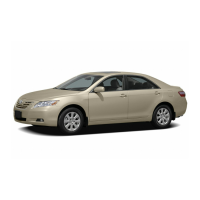
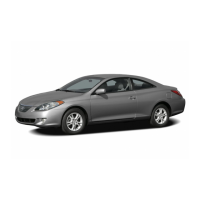
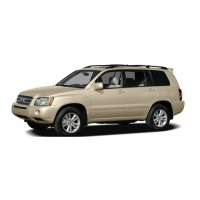
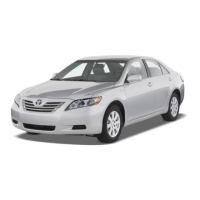








